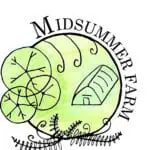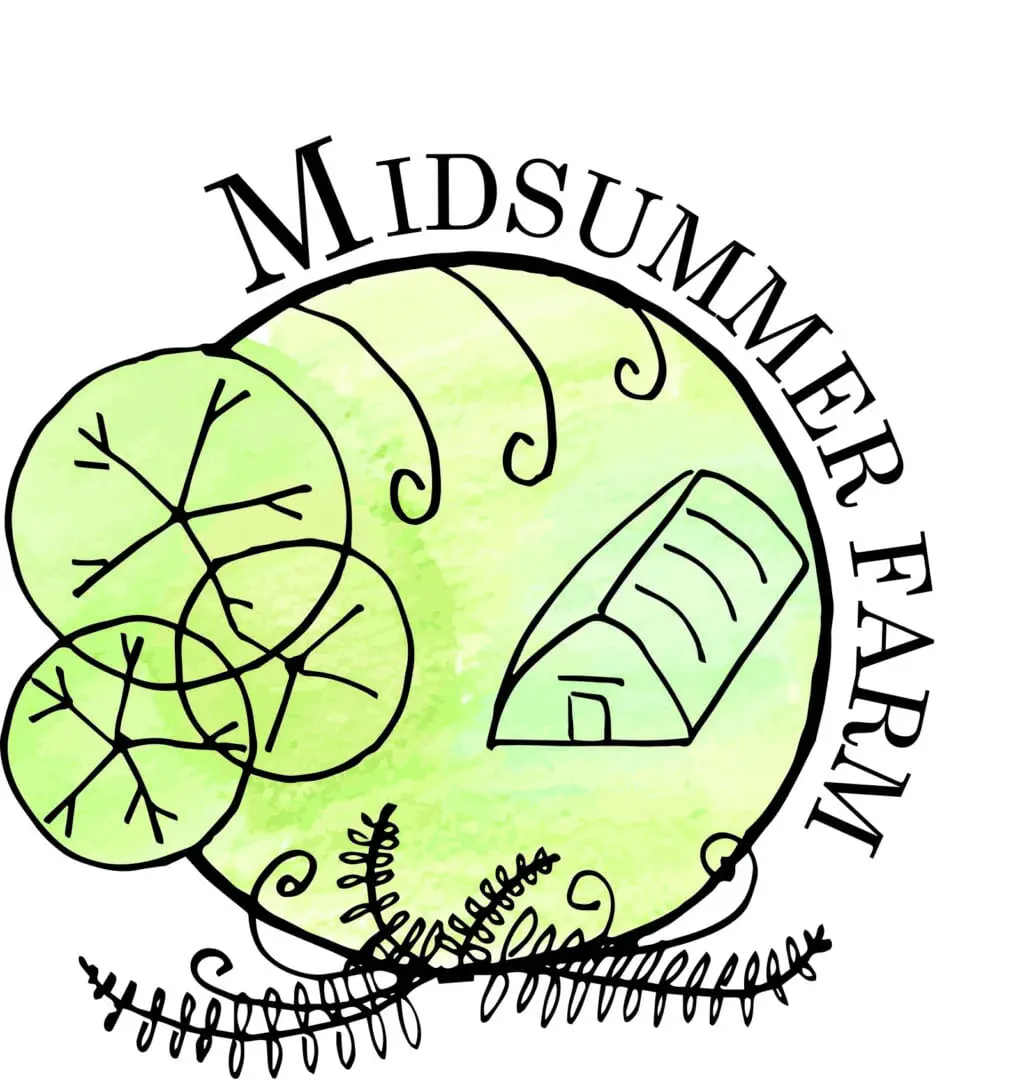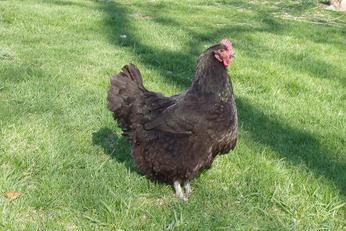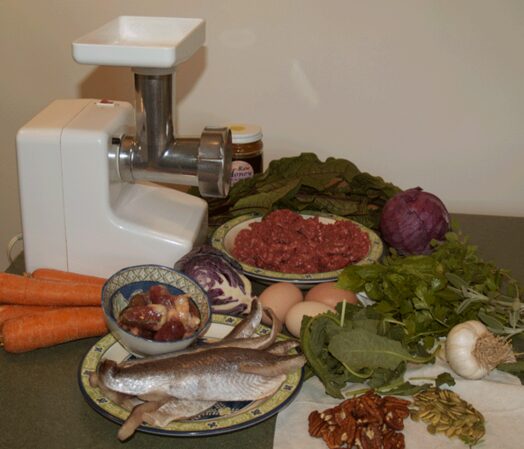
FAVORITE PET FOOD RECIPES
Raw Sample Meal
About 40 chicken necks without skins
15 chicken hearts
15 organic chicken livers
3 raw carrots
1 raw beet
1 cooked yam
½ small zucchini
2 garlic cloves
a handful of spinach or other dark green
½ cup raw pumpkin or sunflower seeds
½ cup frozen berries
3 tbsp extra virgin olive oil
1 tbsp honey
2 tbsp tahini or other nut paste
500 mg vitamin C powder
1 tsp kelp powder
1 tbsp tumeric powder
1 tbsp dried or a small bunch of fresh parsley
1 tbsp dried oregano or a small bunch of fresh oregano
Grind and Mix all together. See our Step by Step Grinding Technique Page.

Formatting Vegetables for Carnivores
Different dogs and cats have different metabolisms, and this is seen in an especially dramatic way when it comes to the processing of vegetable matter.
Wild carnivores are known to eat the contents of their prey’s intestines and digestive systems. This is viewed as one of the only ways carnivores get vegetables into their diet.
Many wild dog species do browse for vegetable-based foods, but the vast majority of the food they eat is meat-based.
But domestic pets have evolved differently. Domestic dogs and cats have spent hundreds, if not thousands, of years beside humans in human households. And vegetable matter was often a part of the regular diet provided to them. So over time many household pets and especially dogs, have developed the ability to effectively digest vegetable matter and gain nutrition from it.
So it would be a smart idea to try incorporating vegetables into your pets’ diets. Each pet will digest vegetables a little differently, so start with small amounts, be observant, and adjust according to your individual pet’s needs.
There are quite a few options for feeding vegetables to carnivores – and by mixing it up, you will be providing diversity, which is always healthy.
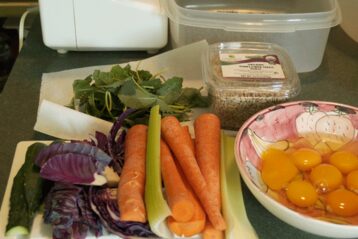
Formatting….
Raw vegetables can be challenging for carnivores to chew thoroughly. Grinding or Grating vegetables can make them much more available to your dog or cat’s digestive system. Although your dog may like whole raw carrots and your cat may attack whole broccoli florets, vegetables are usually more digestible when ground up. In general, your animals will not get sick from swallowing big pieces of carrot, but you will see carrot pieces in his stool, so he missed out on a lot of what the carrot had to offer. You want him to get all he can from the carrot, so grinding it up and mixing it with raw meat really promotes better digestion.
Sometimes cooking vegetables makes them even more bioavailable. I like mixing it up – sometimes feeding raw and sometimes cooked.
This chopping and cooking mimics how vegetables matter would be within the digestive systems of prey animals. Some people take it another step further and ferment the vegetables that they feed their pets.
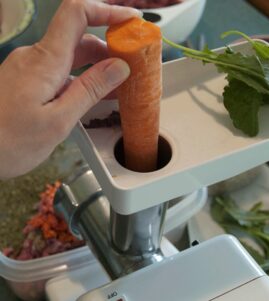
Veggie Favorites
My cats love steamed broccoli florets and cooked peas. One of my cats attacks broccoli and runs away growling with the floret! My dogs love raw and cooked carrots.
Great veggies to add while grinding meat: Broccoli, cauliflower, carrots, zucchini, any squash, pumpkin, cabbage (red or green), cucumbers, beets, turnips, sweet potatoes, celery, etc.
Fruits: berries, apples, etc. are also a great addition.
Don’t forget the dark leafy greens – healthy for you and for your pets! They are an important building block to your homemade dog food although a little goes a long way. Can be used cooked or raw and chopped fine: kale, chard, spinach, lettuce, dandelion greens, plantain, etc.
Some notes:
I don’t usually feed my cats and dogs nightshade family vegetables. Nightshades are tomatoes, peppers, potatoes, eggplants. A little bit – like some leftover spaghetti and meatballs – isn’t a problem.
I like to cook sweet potatoes and winter squash like pumpkin and butternut before adding to pet food.
NEVER feed onions, scallions, leeks, shallots, etc.
Why We Like to Use Chicken Necks
Why Chicken Necks?
The meat I use the most for feeding my dogs is chicken neck.
Lately, Chicken Necks have become quite hard to find, crazily enough. Ten years ago they were easy to come by and cheap, but I can’t even get my local supermarket to order them for me at this point.
I may have started out using Chicken necks because they were inexpensive, but now even with the difficulty of acquiring them, I still really want to use them for my dogs’ food.
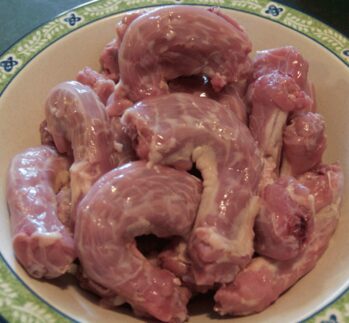
Chicken necks are a well-balanced meat source. They have a nice ratio of bone, cartilage, meat, and fat. Perfect for growing puppies and great for all dogs and cats too. I have a lot of anxiety about feeding my pets bones as I am always the bones will splinter. Especially with the way animals are raised today, super-fast with pressure genetics and on barebones feeds, bones just don’t develop and grow the way they used to. The bones in the chicken necks are the chunky vertebrae – they are easily chewed and don’t get sharp and splintery. [SAFETY NOTE: Only feed RAW bones; NEVER feed COOKED bones!]
Lamb and Whiting With Veggies and Seasonal Herbs
Ingredients
6-8 frozen whiting fish fillets
1 pound of ground lamb
7-8 chicken hearts
3 eggs with shells
3-4 carrots
about 1/4 medium red cabbage, cut into 1 inch wide strips to fit into the meat grinder
1/4 cup of pecans
2 tablespoons (12 g) pumpkin seeds
3-4 dark kale leaves
1 clove fresh garlic
a couple sprigs of fresh herbs, I used oregano, basil, and parsley
1 tablespoon (9 g) bonemeal
1 tablespoon (20 g) honey
1 tablespoon (10 g) kelp
Directions
Alternate putting the fish fillets, hearts, eggshells, vegetables, and nuts through a meat grinder and into a large bowl. Add the remaining ingredients to the bowl and mix thoroughly. Store in a well-sealed container in the refrigerator. If you make more than can be consumed in 5 days, separate into serving-size portions and freeze. Or you can make a really big batch, and roll the mixture into serving-size meatballs and freeze them in a single layer on a baking sheet. Once frozen, put the meatballs into freezer bags for easy storing. Defrost the desired number of meatballs in the refrigerator a few days before you need them. Meatballs will last at least 3 months in the freezer. Serving: Feed 1/4 cup (50 g) twice a day to a medium-size cat; 1 cup (200 g) twice a day to a medium-size dog.
Variations: This recipe has a lot of room for variation—just don’t get carried away with adding different vegetables and end up feeding your pet more veggies than meat. You want to keep at least

Beefy Summer Squash Recipe
We always have lots of summer squash and zucchini at the end of summer and so I made a couple pet food recipes featuring them. One of my dogs loves to steal zucchini off the counter – I usually make him eat it outside and he sometimes end up planting the seeds around the yard, giving us new squash plants next spring!
Ingredients
1.5 pounds of ground beef (I used a nice fatty piece of grassfed chuck roast)
1 tablespoon (9 g) bonemeal and/or 3 ground eggshells
3 eggs
2 tablespoons (30 ml) extra virgin olive oil
about 6 broccoli florets
1 small or medium summer squash or zucchini, cut lengthwise into strips to fit into the meat grinder
1/4 cup (24 g) raw pumpkin seeds or sunflower seeds
a sprig or two of fresh herbs (or a tbsp of dried) like parsley, oregano, cilantro, basil
2 tablespoons (14 g) turmeric powder
1 tablespoon (20 g) honey
1 tablespoon (10 g) kelp
Directions
If you are grinding your own beef from a chuck roast, freeze the roast for about 2 hours. Then cut into strips that will fit into your meat grinder. The meat processes best the colder it is – half frozen meat actually works best, providing nice texture in the food. As you’re grinding the meat, alternate with the squash strips and the nuts, herbs, and broccoli with the meat.
If you are starting with ground beef, you can use a food processor or hand mince the other ingredients together then just mix well with the ground meat. Finely chopping your vegetables, greens, and nuts will make the nutrients in them more bio-available for your pets’ digestive system.
Store in a well-sealed container in the refrigerator. If you make more than can be consumed in 5 days, separate into serving-size portions and freeze. Or you can make a really big batch, and roll the mixture into serving-size meatballs and freeze them in a single layer on a baking sheet. Once frozen, put the meatballs into freezer bags for easy storing. Defrost the desired number of meatballs in the refrigerator a few days before you need them. Meatballs will last at least 3 months in the freezer. Serving: Feed 1/4 cup (50 g) twice a day to a medium-size cat; 1 cup (200 g) twice a day to a medium-size dog.
Variations: You can add a cup of oatmeal or cooked barley to this meal. And although I’m imposing exact measurements on the ingredients here, you can put the variety principle to work and vary how much and add different ingredients each time you make this meal. Adding some organ meat, such as a 1/2 cup of chicken livers and/or hearts, would make this meal even better balanced.
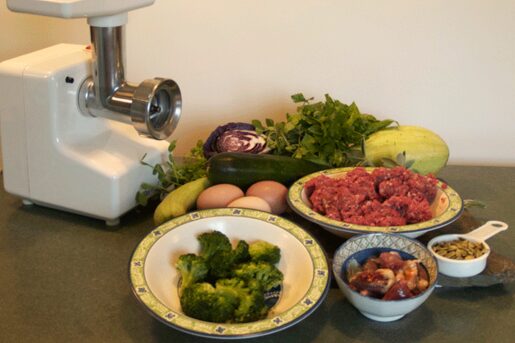
A Whole Food Supplement
1/2 cup tumeric powder
1/2 cup dried stinging nettle
1/2 cup of dried parsley
1/4 cup garlic powder
1/4 cup kelp powder
1/4 cup dried oregano
1/4 cup powdered anise and/or fennel seeds
1/4 cup carob powder (optional)
Mix all thoroughly together and then store in a large glass jar.
I put 1-2 tsp in my dog’s food each day. My dogs weigh between 75 and 90 pounds each. For a medium-sized dog, 1/2-1 tsp would be a great amount. For a toy dog or a small dog under 25 pounds, I’d recommend 1/4-1/2 tsp.

